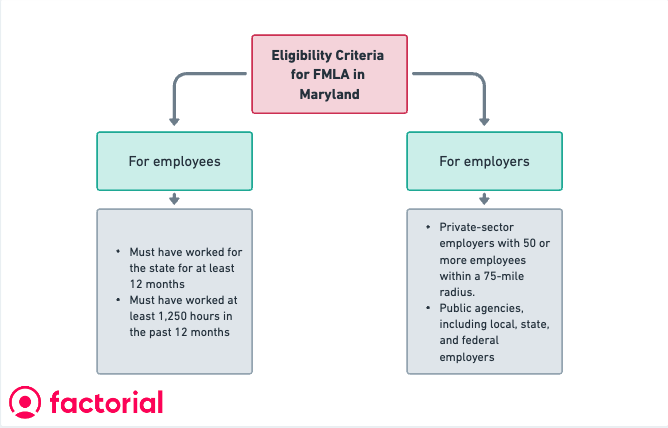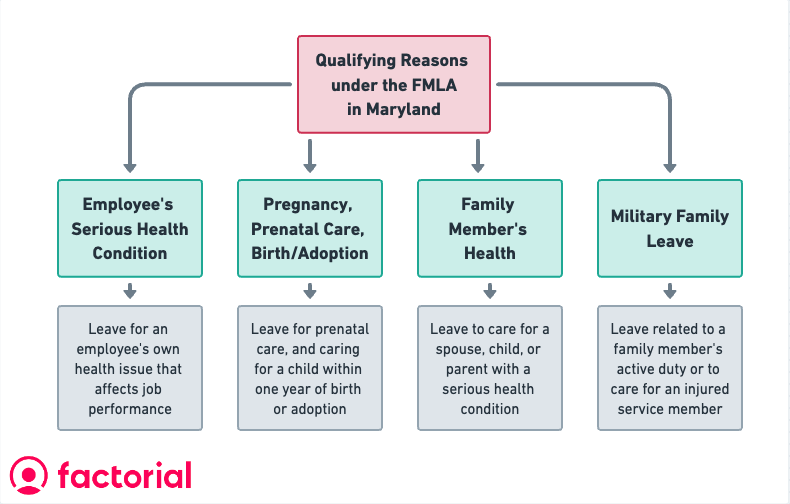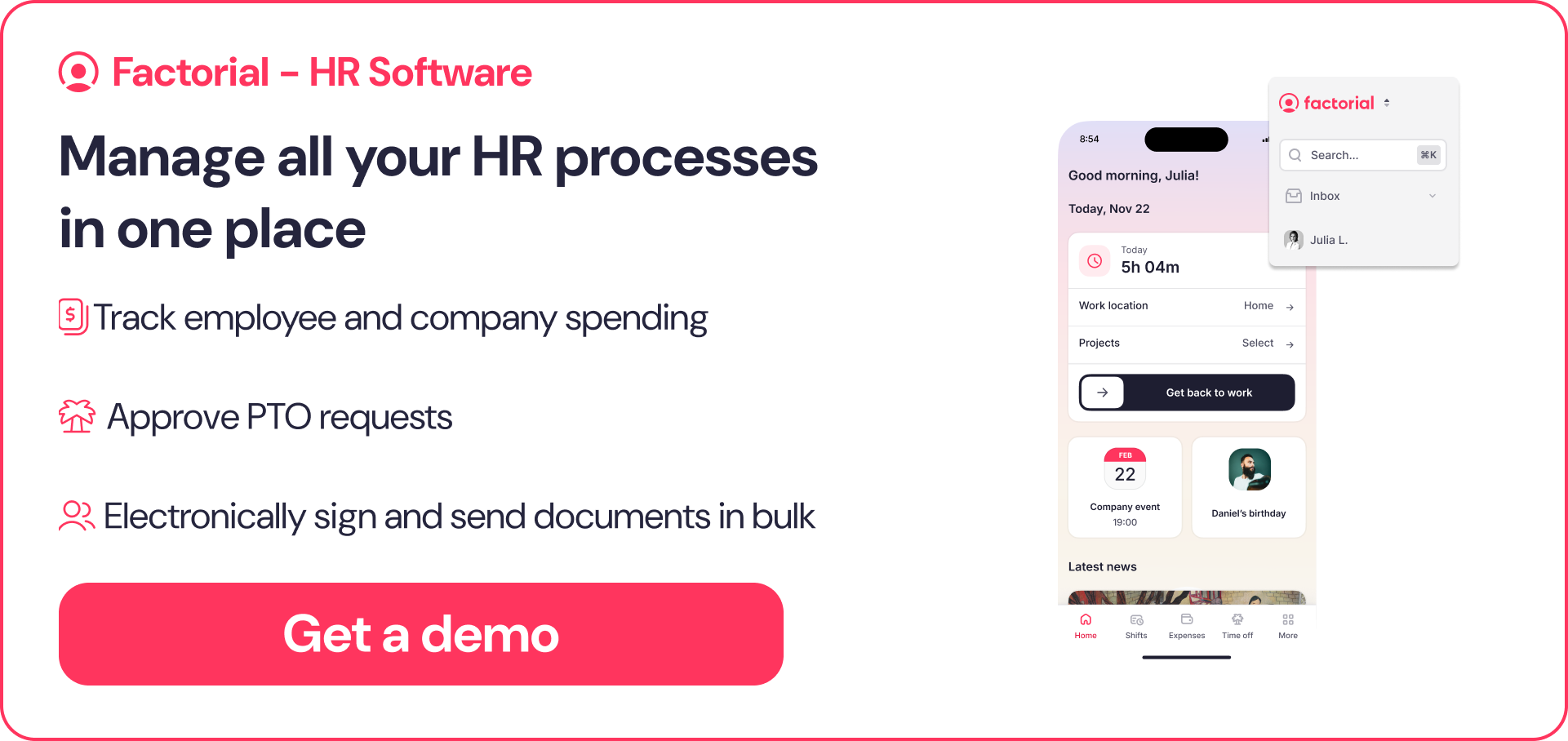The Family and Medical Leave Act (FMLA) in Maryland, established in 1993, fundamentally transformed the employee rights in the United States. It grants eligible employees the right to take unpaid, job-protected leave for specific family and medical reasons, while maintaining their health benefits.
However, the application of FMLA can vary from state to state, making it crucial for both employees and employers in Maryland to understand the specific nuances and requirements of the law within the state.
Whether you are an employee seeking clarity on your rights or an employer striving to ensure compliance, this article aims to provide a thorough understanding of the FMLA in Maryland, equipping you with the knowledge to effectively navigate this essential aspect of employment law.
TABLE OF CONTENTS
- What is Family and Medical Leave Act (FMLA) Maryland?
- FMLA: Eligibility Criteria in Maryland
- Qualifying Reasons under the FMLA in Maryland
- Duration and Types of Family and Medical Leaves in Maryland
- Employee Rights and Employer Obligations Under the FMLA Leave
- How To Request FMLA Leave in Maryland
- Federal vs. State Specifics in Maryland: Comparison of FMLA and Maryland state laws
- Resources about FMLA in Maryland
- FAQ About Family And Medical Leave in Maryland
- Effortlessly Track Employee Time Off With This HR Software ✅
What is Family and Medical Leave Act (FMLA)?
Across all 50 states in the United States, the Family and Medical Leave Act (FMLA) was enacted in 1993 to enhance workers rights. In the beginning, it was to assist employees facing health or family crises, without losing their jobs.
In essence, FMLA allows employees 12 weeks of unpaid, job-protected leave per year while maintaining their health insurance coverage. All government agencies, schools, and companies with 50 or more employees are covered by this law. FMLA covers a wide range of situations, including illness, childbirth, adoption, and military family circumstances.
FMLA: Eligibility Criteria in Maryland
In Maryland, the Family and Medical Leave Act (FMLA) sets specific criteria to determine who is covered under its provisions.

- Employer Eligibility: FMLA applies to private-sector employers with 50 or more employees within a 75-mile radius, for at least 20 workweeks in the current or preceding calendar year. It also encompasses all public agencies, including local, state, and federal employers, and public and private elementary and secondary schools, regardless of the number of employees.
- Employee Eligibility: To be eligible for FMLA leave, an employee must have worked for a covered employer for at least 12 months (not necessarily consecutive). They must have worked a minimum of 1,250 hours during the 12 months prior to the start of the FMLA leave. The employee should be working at a location where the employer has at least 50 employees within a 75-mile radius.
Qualifying Reasons under the FMLA in Maryland
Under the Family and Medical Leave Act (FMLA) in Maryland, employees are entitled to take leave for several significant reasons:

- Personal: Leave for an employee’s own serious health issue
- Family Member’s Serious Health Conditions: This includes to care for a spouse, child, or parent suffering from a serious health condition.
- Birth, Adoption, or Foster Care Placement of a Child: FMLA allows parents to take leave for the birth of a child, as well as for the adoption or foster care placement of a child, providing time for bonding and care.
- Military-Related Exigencies and Caregiver Leave: Employees may take leave for reasons related to a family member’s military service, including exigencies arising from a family member’s deployment. FMLA also provides for a longer leave (up to 26 weeks) to care for a family member who is a service member with a serious injury or illness.
Duration and Types of Family and Medical Leaves in Maryland
Duration of leaves under the Family and Medical Leave Act (FMLA)
- Maximum Duration of FMLA Leave: Employees are entitled to a maximum of 12 weeks of unpaid leave within a 12-month period. In the case of military caregiver leave, this duration extends to 26 weeks.
Types of Family and Medical Leaves in Maryland
- Continuous Leave: This involves taking a continuous, uninterrupted leave period.
- Intermittent Leave: This type of leave allows employees to take FMLA leave in separate blocks of time due to a single qualifying reason.
- Reduced Schedule Leave: This allows an employee to reduce their working hours, either daily or weekly, for a period of time due to a qualifying reason.
Employee Rights and Employer Obligations Under the FMLA Leave

Job Security
Employees are guaranteed the right to return to the same or an equivalent position.
This protection ensures job security, even after an extended period away for qualifying reasons.
Health Insurance Maintenance
Employers must maintain the employee’s health insurance under the same terms and conditions as if they had not taken leave.
Employees continue to be responsible for their portion of health insurance premiums.
Protection of Employee Benefits
Employee’s benefits are maintained as if the worker is actively working.
Employer’s Role in Granting Leave and Maintaining Compliance
Employers are required to grant leave to eligible employees for qualifying reasons under the FMLA.
They must also keep accurate records and comply with all aspects of the FMLA, including not interfering with, restraining, or denying the exercise of FMLA rights.
Employers are prohibited from retaliating against employees for taking FMLA leave.
How To Request FMLA Leave in Maryland
Step-by-Step Guide on How Employees Can Request FMLA Leave
- Determine Eligibility: You must work at a location with 50 or more employees within a 75-mile radius and be employed for at least 12 months by a covered employer.
- Understand the Reason for Leave: Determine your FMLA qualifying reason, such as personal health issues, family member care, birth or adoption of a child, or military exigencies.
- Notify Your Employer: Notify your employer in writing or verbally of your need for FMLA leave. While immediate notice is not always possible, FMLA generally requires 30 days’ advance notice.
- Submit Required Forms and Documentation: Complete any FMLA leave request forms provided by your employer. Provide medical certification or other required documentation to support your leave request, such as a doctor’s note or military orders, if applicable.
- Await Employer Response: After submitting your request, your employer must respond within five business days, notifying you of your eligibility and detailing any additional information required.
- Coordinate Leave Details: Discuss with your employer the specifics of your leave, such as the start date, duration, and any potential need for intermittent leave or a reduced schedule.
- Understand Your Rights and Responsibilities: Review the rights and responsibilities under FMLA, including job protection, health insurance continuation, and any obligations you have during your leave.
Documentation and Notice Requirements
- Medical Certification: If you need leave due to serious medical conditions (personal or family), provide a medical certificate. The certification should include the date the condition began, its expected duration, and relevant medical facts.
- Advance Notice: In case of foreseeable leave, such as childbirth or planned medical treatment, provide at least 30 days’ notice.
- Periodic Updates: Keep your employer informed about your status and intent to return to work, especially if the leave duration changes.
- Fitness-for-Duty Certification: Provide your employer with a fitness-for-duty certification before returning to work from serious health leave.
Resources about Maryland's State Law
Here are other important Maryland related articles:
- What are the Maryland WARN Act & Notice Requirements?
- Push for a 4-day work week: Guide for Maryland employers
- At Will Employment By State: HR Guide By Factorial
- Paid Sick Leave Laws By State 2023 (New York, Texas, etc)
- PTO carry over: A state-by-state guide for employers
FMLA per State
- Family and Medical Leave Act California: How Does It Really Work?
- Family and Medical Leave Act Florida: How Does It Work?
- Family and Medical Leave Act Texas: How Does It Work?
- Family and Medical Leave Act Illinois: How Does It Work?
- Family and Medical Leave Act Colorado: How Does It Work?
- Family and Medical Leave Act Ohio: How Does It Work?
- Family and Medical Leave Act Massachusetts: How Does It Work?
- Family and Medical Leave Act NY: How Does It Work?
- Family and Medical Leave Act Oregon: How Does It Work?
- Family and Medical Leave Act Michigan: How Does It Work?
- Family and Medical Leave Act Georgia: How Does It Work?
- Family and Medical Leave Act Indiana: How Does It Work?
- Family and Medical Leave Act Maryland: How Does It Work?
- Family and Medical Leave Act Missouri: How Does It Work?
- Family and Medical Leave Act Nevada: How Does It Work?
- Family and Medical Leave Act New Jersey: How Does It Work?
FAQ about Family and Medical Leave in Maryland
1. What qualifies as a serious health condition under FMLA?
Conditions requiring an overnight hospital stay, incapacitation for more than three days with ongoing treatment, chronic conditions with periodic treatment, and pregnancy-related issues.
2. Who is eligible for paid leave benefits under Maryland’s TTCA?
Employees who have worked at least 680 hours over the past 12 months and self-employed individuals who opt into the program.
3. What are the types of leave covered under the TTCA?
Leave for the care of a newborn or newly placed child, care for a family member with a serious health condition, the employee’s own serious health condition, care for a service member, or due to a family member’s military deployment.
4. Can my employer ask me to switch positions during FMLA leave?
Yes, if the leave is foreseeable and the new position is equivalent in pay and benefits and better suited for intermittent leave.
5. Will I have to use my vacation time during FMLA leave?
Employers can require or employees may elect to use accrued paid leave (like vacation or personal leave) during FMLA leave.
6. Is FMLA leave paid?
No, FMLA requires only unpaid leave. Employers aren’t required to pay if they provide less than 12 weeks of paid leave.
7. What notice must I give my employer for FMLA leave?
Provide 30-days advance notice for foreseeable leave, or as soon as practicable for unforeseen leave.
8. What are the rules if both spouses work for the same employer?
The employer may limit the spouses to a combined total of 12 weeks of leave for childbirth, adoption, or to care for a sick parent.
9. What are employer requirements under Maryland’s Parental Leave Act (MPLA)?
Employers with 15-49 employees must provide 6 weeks of unpaid parental leave for the birth, adoption, or foster placement of a child.
10. What is required for notice under the MPLA?
Written notice of intent to take parental leave is generally required 30 days before the leave starts, with exceptions for unexpected events.
11. Are existing paid leave policies affected by TTCA?
Employees must exhaust all employer-provided leave not required by law before receiving TTCA benefits. Employers can’t diminish employees’ rights under TTCA through their policies.



